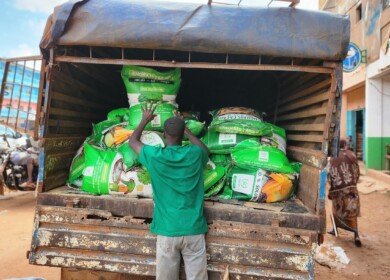Cocoa prices rebound amid concerns over recent excessive losses

Cocoa prices experienced a notable rebound today, with July ICE NY cocoa (CCN24) increasing by 143 points (1.98%), and July ICE London cocoa #7 (CAN24) climbing 97 points (1.62%). This surge comes as traders cover short positions, spurred by concerns that the recent downturn in prices was overdone.
Market sentiment shifted following a report from the Hightower Report, which highlighted potential production issues due to West African cocoa farmers’ reduced use of fertilizer and pesticides. This underutilization is expected to impact the 2024/25 cocoa output negatively, adding bullish pressure to the market.
Adding to these concerns, cocoa production in the Ivory Coast, the world’s largest cocoa producer, is showing signs of decline. Government data revealed a significant drop in cocoa shipments to ports, with only 1.43 million metric tons (MMT) shipped from October 1 to May 19, a 30% decrease from the previous year. Ecom Agroindustrial forecasts that the Ivory Coast’s 2023/24 cocoa production could fall by 21.5% year-over-year to an 8-year low of 1.75 MMT.
Despite these bullish indicators, cocoa prices had slumped to 2-1/2 month lows earlier in the week, following the deliveries for the expired May London cocoa contract which totaled 53,100 metric tons. Although this was lower than last year’s 67,350 MT, it suggested that European cocoa supplies might not be as constrained as previously feared.
Market dynamics have been further complicated by historically low liquidity in cocoa futures. The latest Commitment of Traders (COT) report indicated that short-only positions in NY cocoa futures for the week ending May 14 were at a nine-year low, while long-only positions in London cocoa futures were at a near three-year low.
Earlier in the year, cocoa prices soared to all-time highs due to acute supply shortages, the most severe in 40 years. Concerns escalated when Bloomberg reported that the Ghana Cocoa Board was negotiating to postpone the delivery of up to 250,000 MT of cocoa due to a shortfall in beans. These supply issues, combined with robust global demand, have supported cocoa prices despite high levels.
On the demand side, recent reports indicate resilience despite record prices. The National Confectioners Association noted that North American Q1 cocoa grindings rose by 9.3% quarter-over-quarter and 3.7% year-over-year. Similarly, the Cocoa Association of Asia reported a 5.1% increase in Q1 cocoa grindings quarter-over-quarter, though there was a slight year-over-year decline.
Adding to the bullish sentiment, ICE-monitored cocoa inventories in US ports dropped to a three-year low, further signaling tightening supply.
In Ghana, the Cocoa Board reported a dramatic cut in the 2023/24 cocoa harvest forecast due to extreme weather and disease, projecting the harvest at roughly half of the initial forecast and a 22-year low.
The West African mid-crop outlook is also bleak, with significant reductions in projections for Ghana, Ivory Coast, and Nigeria, indicating further supply tightness.
The global cocoa market is bracing for an expanded deficit in the 2023/24 season as per the International Cocoa Organization (ICCO), with production expected to fall by 11% year-over-year and grindings to decrease by nearly 5%. This scenario is set to push the stock-to-grindings ratio to its lowest in over four decades.
Contributing to the production woes are unfavorable growing conditions and crop diseases in West African farms, which have fueled a rapid increase in cocoa prices. The current El Niño weather event is also causing concerns, reminiscent of the 2016 event that led to significant price rallies.
In a recent development, the Ivory Coast cocoa regulator, Le Conseil Cafe-Cacao, halted forward cocoa sales for the 2024/25 season until there is a clearer picture of the production outlook. This decision adds another layer of uncertainty to the already volatile cocoa market.
On the other hand, recent increases in farm-gate prices in the Ivory Coast and Ghana are expected to incentivize cocoa deliveries, potentially easing some of the supply constraints in the short term. The Ivory Coast government raised prices by 50% for mid-crop beans, while Ghana increased them by 58% for the remainder of the 2023/24 season.
Overall, the cocoa market is navigating a complex landscape of fluctuating supply and demand dynamics, with various factors contributing to the recent price rebound and ongoing volatility.
Enjoyed this story?
Every Monday, our subscribers get their hands on a digest of the most trending agriculture news. You can join them too!











Discussion0 comments